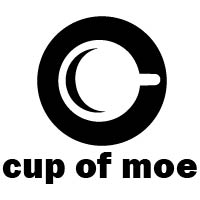We may earn money or products from the companies mentioned in this post.
Marty Shelly’s classic novel Frankenstein first stumbled onto the big screen in a James Whale-directed 1931 Universal Studios motion picture. Later, Hammer Films took the reigns for a delightful adaptation in the 1957 Terence Fisher-helmed “The Curse of Frankenstein.” 1958’s “The Revenge of Frankenstein” once again finds Fisher in control. With Peter Cushing reprising his role as Baron Victor Frankenstein, “The Revenge of Frankenstein” benefits from fantastic acting across the board, magnificent set design, and a riveting plot to boot.
After the events of “The Curse of Frankenstein,” Baron Victor Frankenstein (Cushing) is banished sentenced to death. However, the clever Baron narrowly avoids death at the guillotine by switching places with a priest. Then, assisted by a hunchback, Karl (Oscar Quitak /Michael Gwynn), Frankenstein escapes, relocating to Carlsbrück where he becomes a renowned physician under the moniker of Doctor Stein. For as brilliant of a mind as Baron Frankenstein supposedly has, it’s odd that he’s incapable of imagining a more secretive name. Particularly when considering the ominous opening text that explains how the entire “continent breathed a sigh of relief when the guillotine was called upon to end his life of infamy.”
Junior member of the medical council Hans Kleve (Francis Matthews) recognizes Frankenstein, no doubt a combination of his unimaginative pseudonym and unchanged appearance. But rather than reporting Frankenstein to the authorities, Hans instead wants in on the Baron’s experiments. Victor, Karl, and Hans collaborate, continuing Frankenstein’s forbidden experimentation of transferring a living brain into a new body. The deformed Karl seeks a new body and thus volunteers as a willing subject. Part of Karl’s motivation arises from a new acquaintance, the hospital assistant Margaret (Eunice Gayson) with whom Karl is instantly smitten.
Though the experiment appears to proceed perfectly, the aftermath turns deadly. Hans mistakenly informs Karl that he’s poised to become a medical phenomenon. Fearing the outcome of being shown off and ogled over for the rest of his life, Karl escapes the hospital where he’s been locked up under strict supervision. Sneaking into Frankenstein’s laboratory, Karl torches his former body but is interrupted by the janitor. After a scuffle, during which Karl kills the janitor, he seeks refuge with Margret. Meanwhile, Hans and Baron Frankenstein frantically search for Karl to thwart his rampage throughout Carlsbrück.
In many ways, “The Revenge of Frankenstein” is a re-hash of the original film. Once again, Victor Frankenstein fractures taboo with his experimentation on the human body and brain. This time, however, the Baron works with a willing patient rather than committing murder to obtain coveted grey matter. And the resulting creature retains more capacity for thought than in “The Curse of Frankenstein,” since the brain wasn’t damaged prior to the transfer.
Still, the film maintains a fresh quality. The color palate remains vivid throughout, and set design is marvelous, particularly in the laboratory scenes. Vials filled with bright, bubbling liquid pepper the lab, while intricate machinery looms overhead. It’s never explained exactly what any of the complex-looking contraptions actually accomplish, but the ambiance added fosters a lush landscape. Leonard Salzedo composes the string-laden soundtrack which warbles and crescendos at just the right moments to infuse the on-screen action with appropriate emotions.
Acting is top-notch. Unsurprisingly, Cushing steals the show as the sinister Baron Frankenstein. Francis Matthews excites as Hans, while Oscar Quitak and Michael Gwynn marvelously portray pre- and post-operation Karl. Though the talented cast surely contributes to solid all-around performances, superb writing chisels intriguing characters that, through a star-studded cast, jump to life. Once again, Baron Frankenstein proves overly-ambitions and undeterred by ethics in the face of innovation. Victor takes advantage of peasant patients, pilfering their body parts for his new creation. Karl desires a new body, and after the successful experiment offers a neat glimpse into human psyche. As a hunchback, Karl was constantly gawked at and the prospect of experience the same attention, albeit in a nearly perfect shell, overwhelms him. Hans makes an odd choice in the decision to ignore Frankenstein’s past transgressions for the pursuit of science.
A masterful vision of gothic horror the Hammer Films production “The Revenge of Frankenstein” wonderfully iterates upon the original story. A fresh slate of believable characters, gorgeous set design, and first-rate acting performances elevate the 1958 Terence Fisher-directed film above an endless pack of mindless monster movies.
This post may contain affiliate links. We are a participant in affiliate programs such as the Amazon Services LLC Associates Program, an affiliate advertising program designed to provide a means for us to earn fees by linking to Amazon.com and affiliated sites. However, all products are thoroughly tested and reviews are honest and unbiased.

